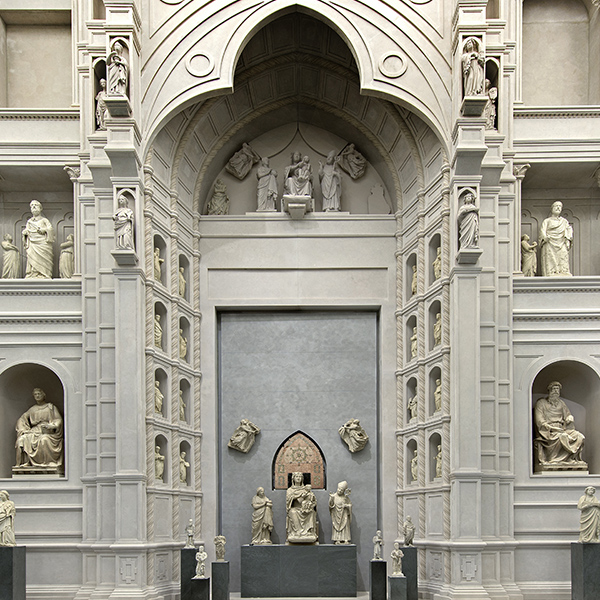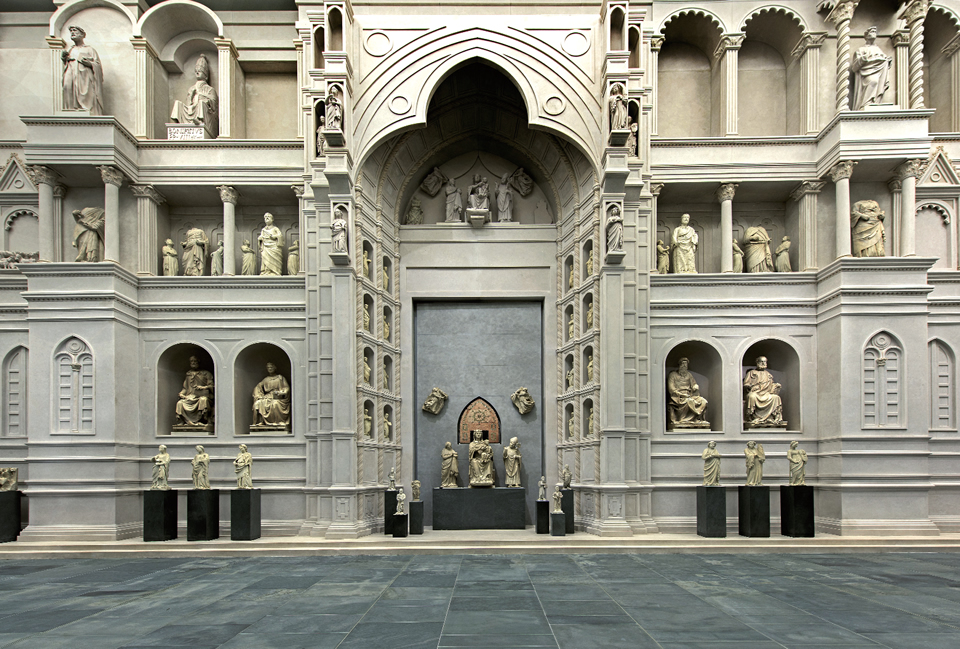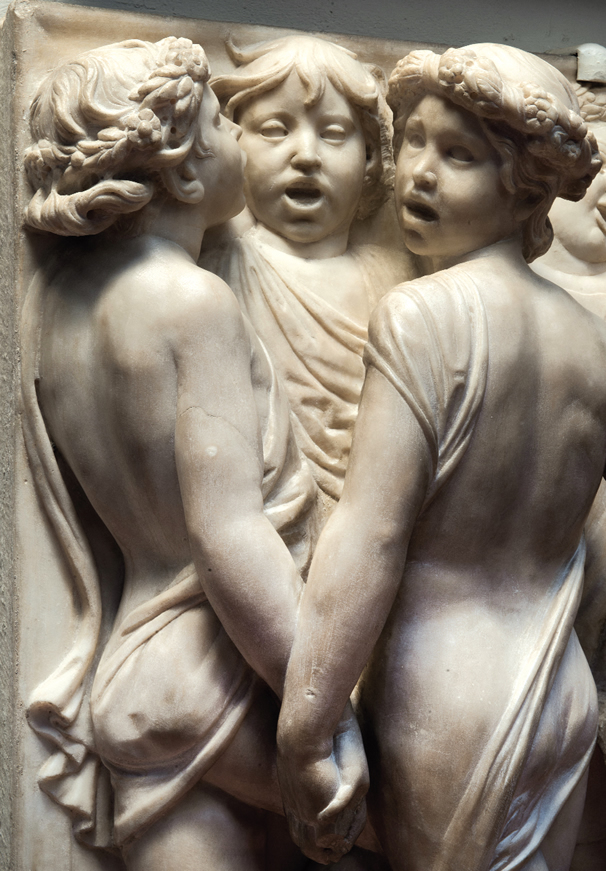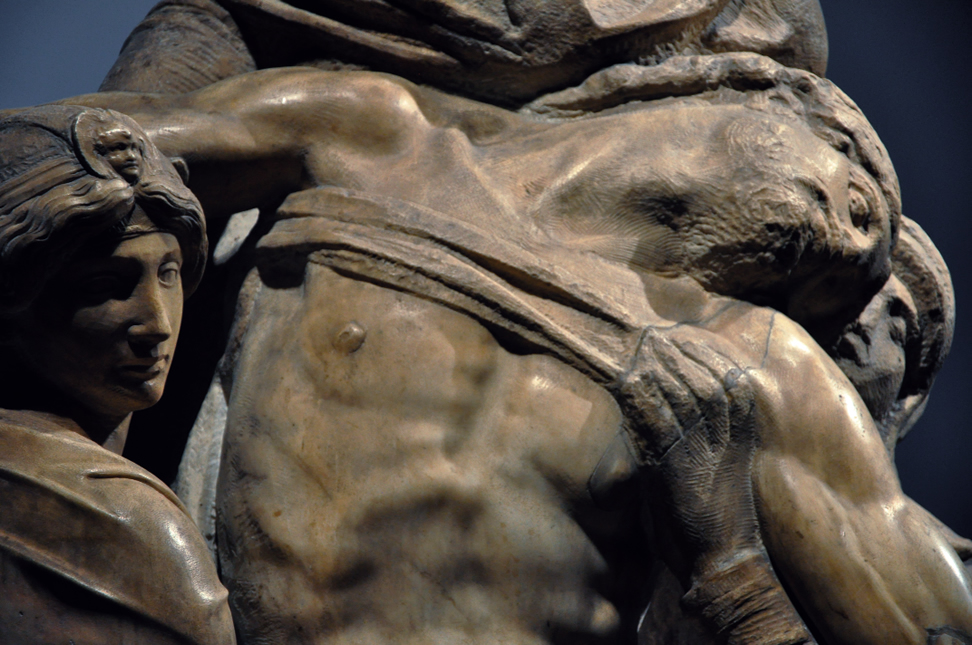by Timothy Verdon
Since its inauguration on October 29th, the New Opera del Duomo Museum in Florence has been recognised as possessing one of the most innovative museum layouts of the Twenty-first century. Visitor numbers have soared from a previous yearly average of 60,000 visitors to the old museum to a current average of 70,000 visitors per month.
Since it first opened to the public in 1891, the Opera del Duomo Museum in Florence has been constantly expanding with a sequence of extensions, renovations and new museum layouts in the years 1931-1937, 1948-1950, 1954, 1965-1967 and 1998-2000. The latest and most ambitious of these transformations was between 2010-2015, when the pre-existing rooms were doubled in size with the addition of a very large property that had belonged to the Opera del Duomo for centuries but had not been used since the late Eighteenth century. The refurbishment and restoration of the original size of the whole property – including the addition hitherto unused – enabled the museum to exhibit those more monumental works in its possession, including large works in marble and bronze hailing from the Cathedral of Santa Maria del Fiore, the Bell-tower by Giotto and the Baptistery of San Giovanni.
The new museum is laid out in the buildings and courtyards where, in 1432, Filippo Brunelleschi, who was involved in the construction of the dome of Florence Cathedral at the time, was working on a medieval farmhouse in order to create a home for the headquarters of the Magistrates of the Opera – as well as building some workshops for the “magistri scharpelli”. It was also here where, following the dismantling of the unfinished fourteenth-century façade of the Cathedral in 1587, the Opera deposited the marble statues and decorations that had been removed from the Cathedral façade and thus changing an area that had once been an area dedicated to work into an “Arsenal of Marble”, as described by Father Giuseppe Richa in his history of Florentine churches that was published in 1757.
The new museum is therefore responsible for bringing back the statues that had been made to adorn the city’s monuments to the very place they had been sculpted and kept! Among the works of art that were produced here were also Michelangelo Buonarroti’s David and Saint Matthew that had both originally been destined for the Cathedral. The first statue had however been re-destined – during its execution – for the Palazzo della Signoria, from where it was moved in 1874 to the Fine Art Academy, whilst the second statue had already been lent in 1832 by the Opera del Duomo to the Fine Art Academy.
The Saint Matthew was moved to the Fine Art Academy in Florence, just as three years previously thirty-seven masterpieces that also belonged to the Opera had been transferred to the Uffizi, since in the meantime the space available at the Opera del Duomo had been halved with the sale in 1778 of the courtyard to the north of the complex which had become the Teatro degli Intrepidi, also known as the Pallacorda or the Teatro Nuovo. So, therefore, the old “marble-statue workshops” disappeared in one fell swoop behind the gold stuccos of an elegant oval five-tier theatre. The statues and marble reliefs that had once upon a time been preserved in these rooms ended up in the remaining courtyard and in the building to the south (corresponding to the farmhouse that Brunelleschi had rebuilt). Here, they were haphazardly displayed and were difficult to see and appreciate. This was the reason why many works were entrusted to the national museums of the time. As a matter of fact, the first few decades of the Nineteenth century, in Florence as well as throughout Europe, witnessed the first attempts at reorganising artistic heritage so that it could be enjoyed by an emerging middle class that was hungry for new cultural experiences. This was one of the reasons behind the newly-founded Kingdom of Italy’s decision to group both history museums and recently-created museums under the authority of the Ministry of Education.
Among those museums founded in Florence in the latter half of the Nineteenth century, the “old” Opera del Duomo was opened to the public in 1891. The idea behind the project was due to the firm belief on behalf of the directors of the Fabbriceria, and in first place, the archivist Cesare Guasti, in the uniqueness of all those works hailing from the Cathedral, the Baptistery and the Bell-tower, as well, of course, as their overall and distinctive holy character.
The three exhibition rooms inaugurated in 1891 grew in size over the course of the Twentieth century, eventually amounting to twenty rooms in all, almost all of them small however and ill-suited to the size of the works being exhibited – works that had been created as external monumental works that were intended to be seen from a distance. From the 1990’s onwards, a further need arose to house more monumental works in the Museum, works that required careful preservation and maintenance and that would be replaced by copies on the religious monuments themselves. This was the case with the three bronze doors of the Baptistery and the sixteenth-century groups of statues that dominated them. In such a way, the property reacquired by the Opera in 1997 added 3000 square metres to the 2500 square meters of the “old” museum thus solving the objective (and interpretative) since the exhibition space required layouts that were better-suited to the historical character of the works being exhibited. The current exhibition areas encompass the whole stage area of the Teatro degli Intrepidi. It had lost its eighteenth-century decorative elements in the early Twentieth century and had become an industrial warehouse and garage. The new museum has sought to re-evoke the theatrical nature of the second courtyard of the Opera in the immense Sala del Paradiso which, with its overhead galleries looking onto the rebuilt medieval façade of the Cathedral, is presented as a theatre of statues.
The essential way to interpret the new museum is to view it as a spectacle of beauty dedicated to all that’s sacred. In the “old” museum, with its reduced space and fragmentary growth, the works could not be “told” in a proper and ordered way. In the “new” museum, there is an attempt at narrating history in an intelligible and moving way, even by conjuring up material and spiritual contexts that might give more meaning to the works of art on display. This desire was also behind the 1891 reconstruction of the choir balconies – the cantorie – by Luca della Robbia and Donatello in order to convey the original role and the structure of the music-playing children and dancers depicted on the famous reliefs.
At the beginning of the Twenty-first century, the message is that of a long-forgotten unity in which the sacred and holy expressed the aspirations of the civilian community and the beauty of the dignity of Man. It was, indeed, from this very bond, and more specifically, from the works of art preserved in the Museum of the Opera del Duomo that the Renaissance of the Arts made its very first steps.







